The seemingly obvious thing about wild mushrooms is that they are just that: wild. They are unplanned, unmanaged, and unpredictable. They grow on their own accord. It continues to surprise me how many people don’t fully understand this. They are not farmed, because they cannot be farmed. It is simply not possible - or at least, nobody has figured out how to do it. Certain edible wild mushrooms are revered around the world for culinary and medicinal purposes, so if people could do it at scale for money, they would. But they can’t. If you want them, you have to go find them in nature, or find a place to buy them, often at a very high premium and in less-than-fresh condition. But even wild mushrooms that you buy, were foraged by someone. While the fact that you can’t grow them is only one of a thousand reasons that wild mushrooms are fascinating, this is a big part of the allure, and also why a little tiny bag of dehydrated Morels can cost an arm and a leg, or kinda-fresh Porcini sometimes sell for more per pound than wild salmon. Even if someone did figure out how to farm them, the product would likely lose what makes it special - the environments in which they grow contribute greatly to their flavor, something that would be difficult if not impossible to replicate if you could grow them at all in the first place. Wild things are inherently special and mushrooms are a prime example of nature at work.
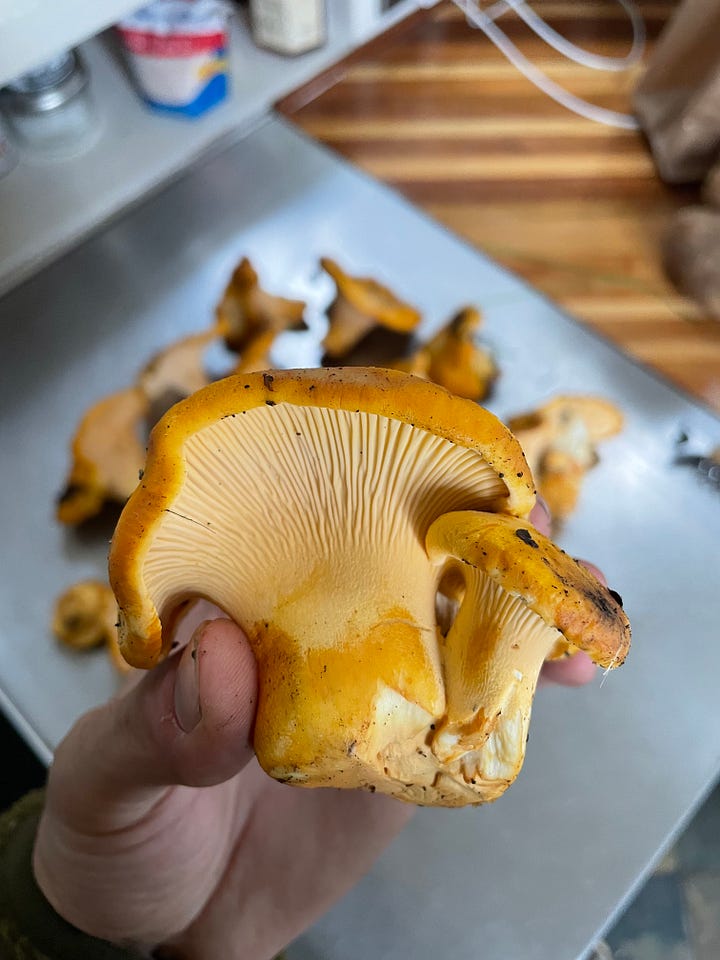

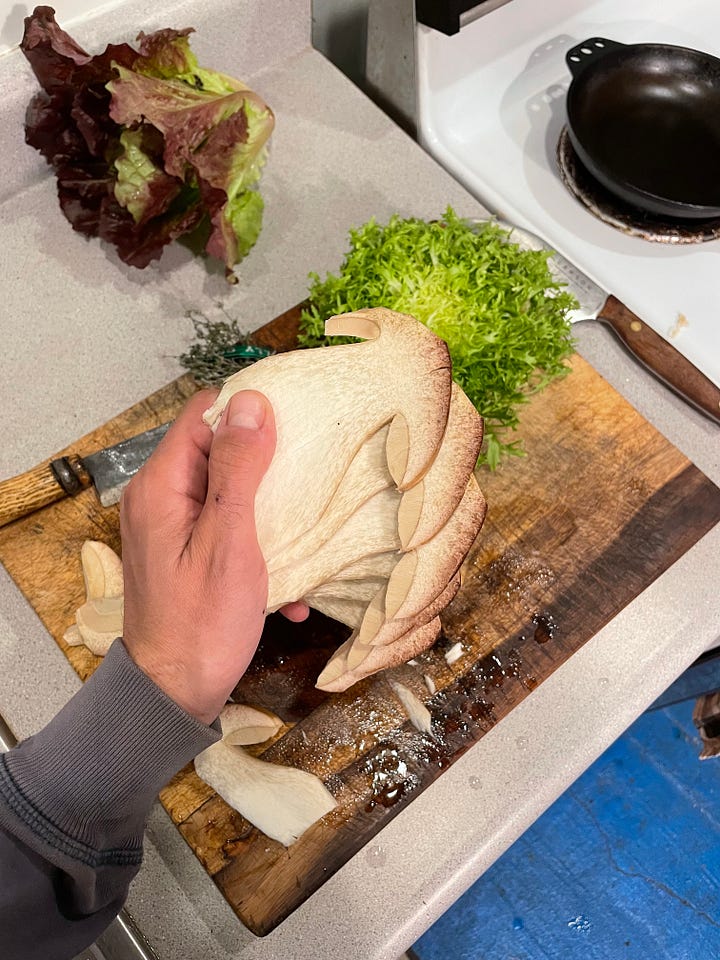
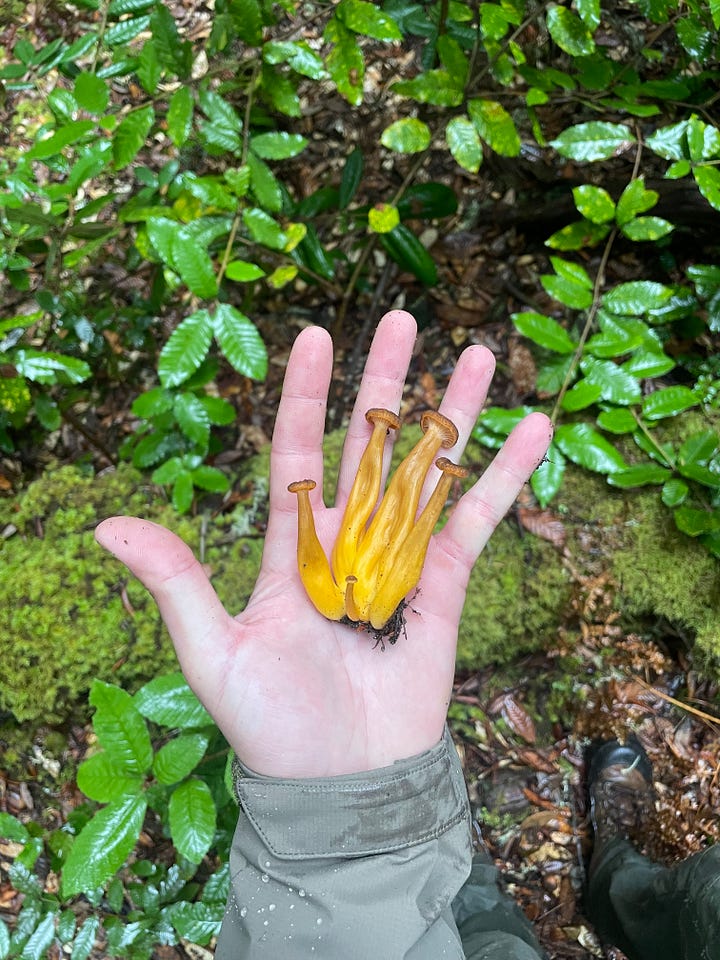
The pursuit of wild mushrooms has some similarities with hunting and fishing, which is part of the reason why I can’t stop doing it. Beyond the the need to protect your secret spots in the pursuit of something elusive, they all share the opportunity to put food on the table of which the quality and uniqueness will never be met by domesticated foods. They are all pursuits that humans have been doing for tens of thousands of years. And they enable you to taste food how it’s supposed to taste. Like really high-grade tuna, or a properly cooked venison steak, wild mushrooms unlock a level of character, texture and flavor that does not exist with regular old store-bought mushrooms. Many of them have flavors that taste unlike anything else. One of my favorite mushrooms, the Matsutake, has a spicy aroma of what famous mushroom writer David Arora calls, “a provocative compromise between red hots and dirty socks”. It is one of the most unique flavors on the planet - and it smells, and tastes amazing. The Japanese know this (and also believe they have anti-cancer properties) and over there, Matsutake can sell for up to a thousand dollars per pound. My local mycological society refers to them as “blazing white beacons of delectability.” While the Matsu is a more advanced mushroom to find and identify, there is a laundry list of other mushrooms that are just as revered and delicious.
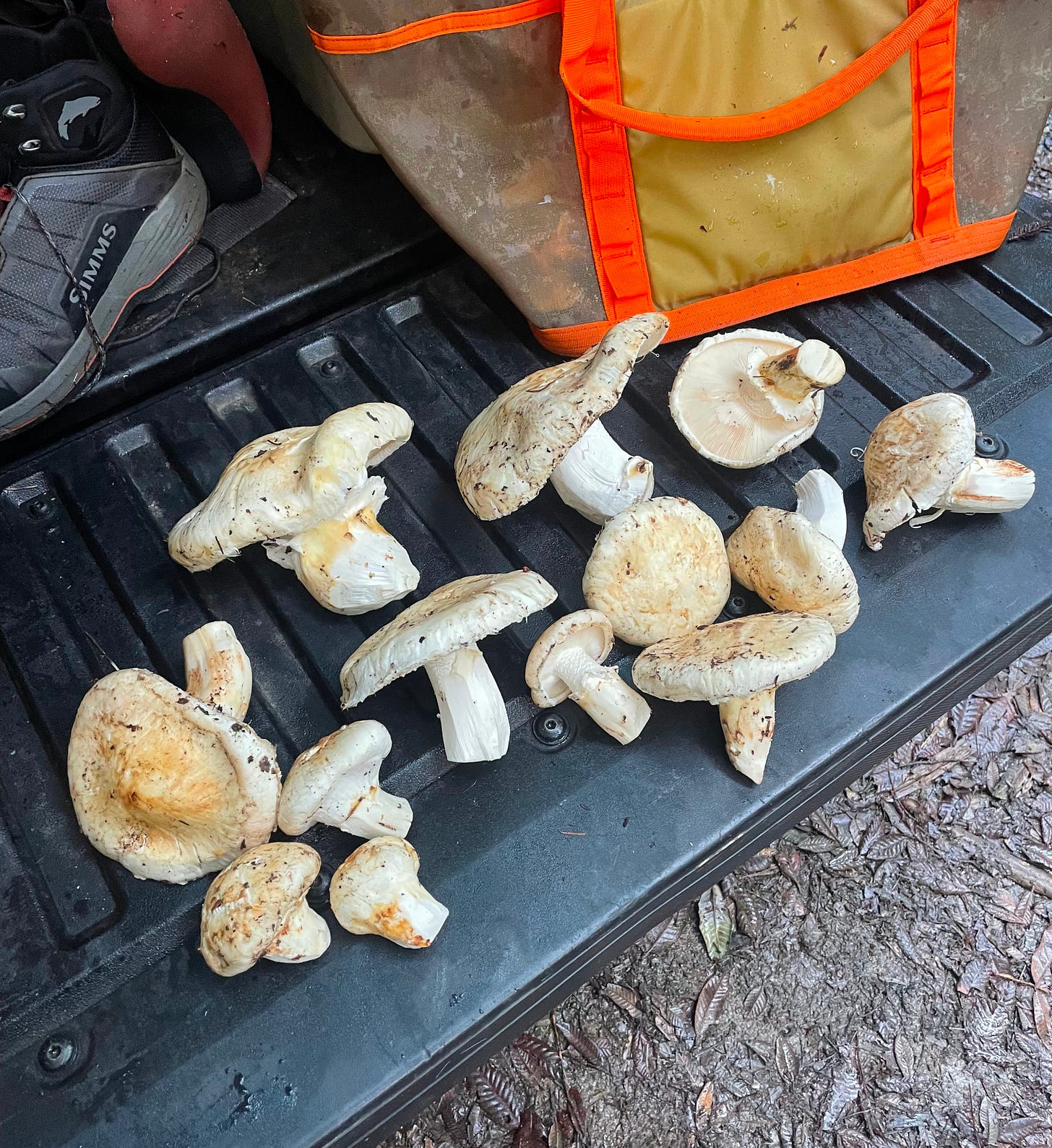
The food aspect of mushroom hunting was the initial thing that got me interested in all of this - and then I discovered it to be a bit more than that. The adventure of finding a honey hole of wild mushrooms can be downright epic. I realize that sounds completely absurd, but it’s true. I often equate finding a perfect condition Porcini to catching a 20” brown trout on a well-presented dry fly. They are equally satisfying in a way that is difficult to describe until you do it. When you have a day where you find a boatload of them, you walk out of the woods with a similar feeling of getting off the river after having a truly epic day - a feeling that only fisherman know. I have to believe that doing these things trigger the same part of your brain to respond with dopamine. As much as anything else, mushroom hunting is a pursuit that gives you a reason to see more of what is out there. Hiking is boring, but hiking with a goal is fun. Especially when a twenty-minute dog walk has the potential to turn into a free grocery run that gets you dozens of un-buyable meals that you can share with your friends and family.
By their sheer existence, wild mushrooms debunk the perception that things in our lives exist because of us. As we hopelessly stress about things in society, mushrooms just keep being mushrooms. No matter what happens in the world, mushrooms carry on, and they have continued to for billions of years. They are a constant, and an indicator that we are not in fact the center of the universe. They have the ability to elevate your connection to the natural world by seeing things from a different perspective. When you look closely for something that in many cases has evolved to be hidden, you pay closer attention to what is around you. And over time you begin to uncover a world right around you that you’d never know existed if you weren’t looking for it.
Since getting into this game, I’ve become much more in tune with the seasons. I pay more attention to the trees, to the wetness of the ground, the direction that I am facing when in the woods, and how the environment is behaving at any moment. I see more wildlife, and my overall woodsmanship has improved. The pursuit of finding them is not really physically or mentally challenging like a late-season big game hunt is, and it does not require the dexterity and finesse that it does to perfectly present a fly to a rising trout. But it requires the level of research, timing, and luck that is up there with most things outdoors that are worth doing.
If you get deep enough into it, you’ll start to notice how people are mostly just unaware of what they’re missing out on. Many people haven’t eaten one because they’re scared, due to the false perception in their head that only crazy people eat wild mushrooms. Yet the more you hear them talked about after you know what’s up, it becomes clear that most people just have no clue what’s going on - whether its the preconceived notion that they’re dangerous, that you can get the same thing out of store-bought mushrooms, or that they don’t know what a ‘wild’ means is in the first place. The happy patrons eating wild chanterelles at a michelin star restaurant would probably spit out their food if they knew that the ingredients to their appetizer were foraged by a 16-year-old kid for beer money. A kid who, mind them, actually knew what he was doing (true story).
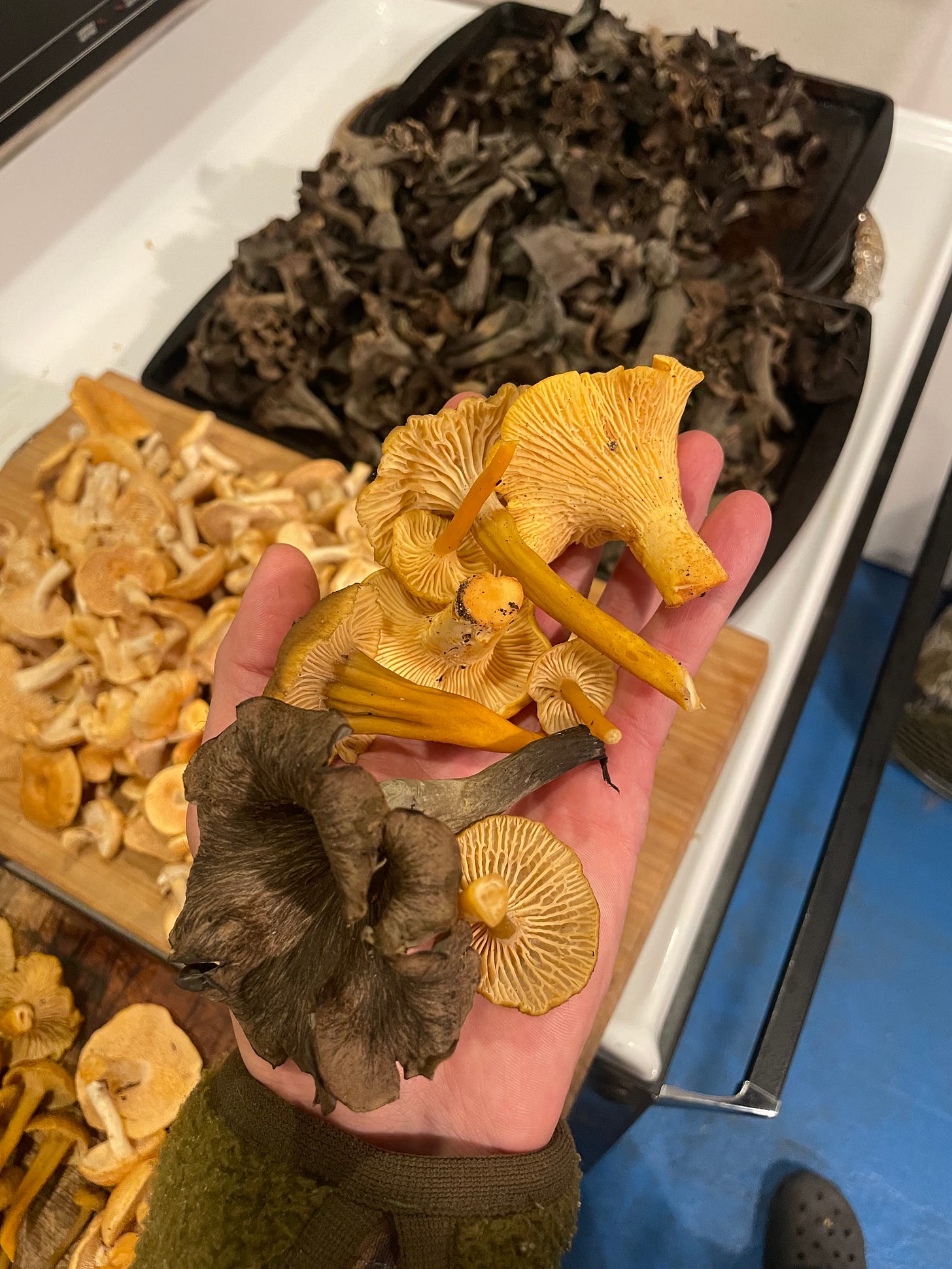
It’s funny how many nice restaurants have a seasonal “wild mushroom” special on the menu, only to be serving you something that is definitely not wild. If you’re in this game, it’s not hard to tell. I recently had dinner at a very well-known restaurant that had “local wild mushroom toast” on the menu. Spoiler alert, they did not know what they were serving. I am not above regular mushrooms - I of course eat them, cook with them, and love them for what they are. I’ll eat standard table mushrooms and bell peppers in a cheesteak made with cheez wiz and paired with a Miller Lite all day long. But people are so out of touch with wild mushrooms that even this restaurant, located less than a mile from one of the most famous foraging spots in the country (they were also ironically selling mushroom forays to guests in the daytime), did not know what they were doing. It was hard to give them the benefit of the doubt when they were charging $34 for a small piece of toast.
When you eat a great wild mushroom that has been cooked properly, the difference is obvious. The flavor of store bought mushrooms pales in comparison. They just do not have the gift of nature’s touch and deep unique umami flavors that all the best wild mushrooms possess. Wild ones have an unmistakable discrepancy in flavor, and often in texture too, that cannot be replicated. They taste like the earth. And you definitely do not need some kind of super sophisticated pallet to tell the difference.
Among everything else, wild mushrooms have given me the opportunity to cook very special meals for people in my life. When I go to cook an elk steak for friends and family, they usually enjoy the mushroom sauce as much or more than the game itself. The look on someone’s face after they taste a fresh Porcini for the first time at the age of 74 will never get old. This is usually followed by a series of questions and answers that lead to people opening their eyes to what these things actually are, and why they are so special - only making the meal that much more enjoyable. I love seeing people start to figure out that there is a false narrative around them that our society has taught us to believe. It will make you feel like a proud parent of your parents.
The only potential downside to this pursuit that I’ve found, is that my girlfriend regularly calls me a hobbit. She’s not wrong for it.




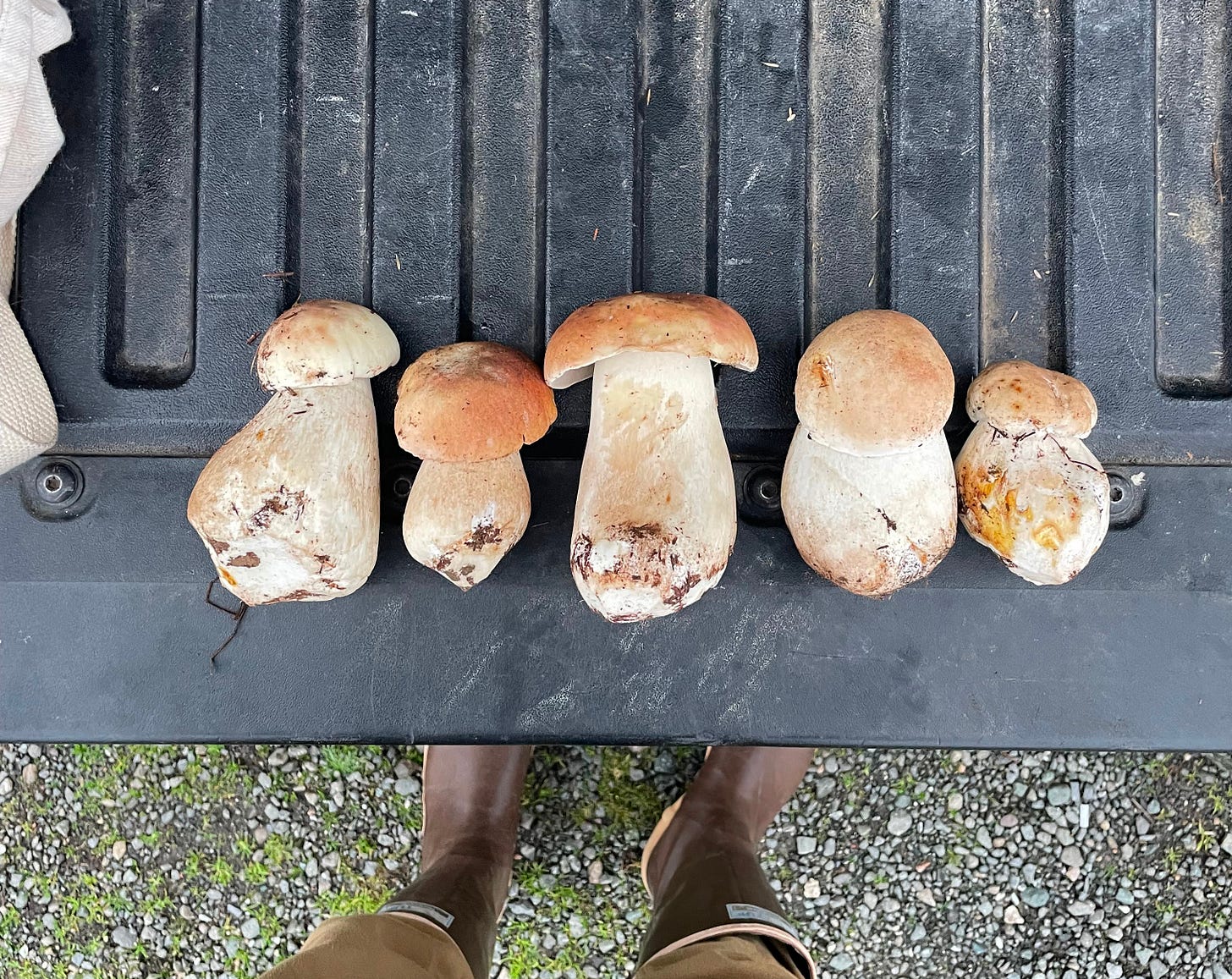
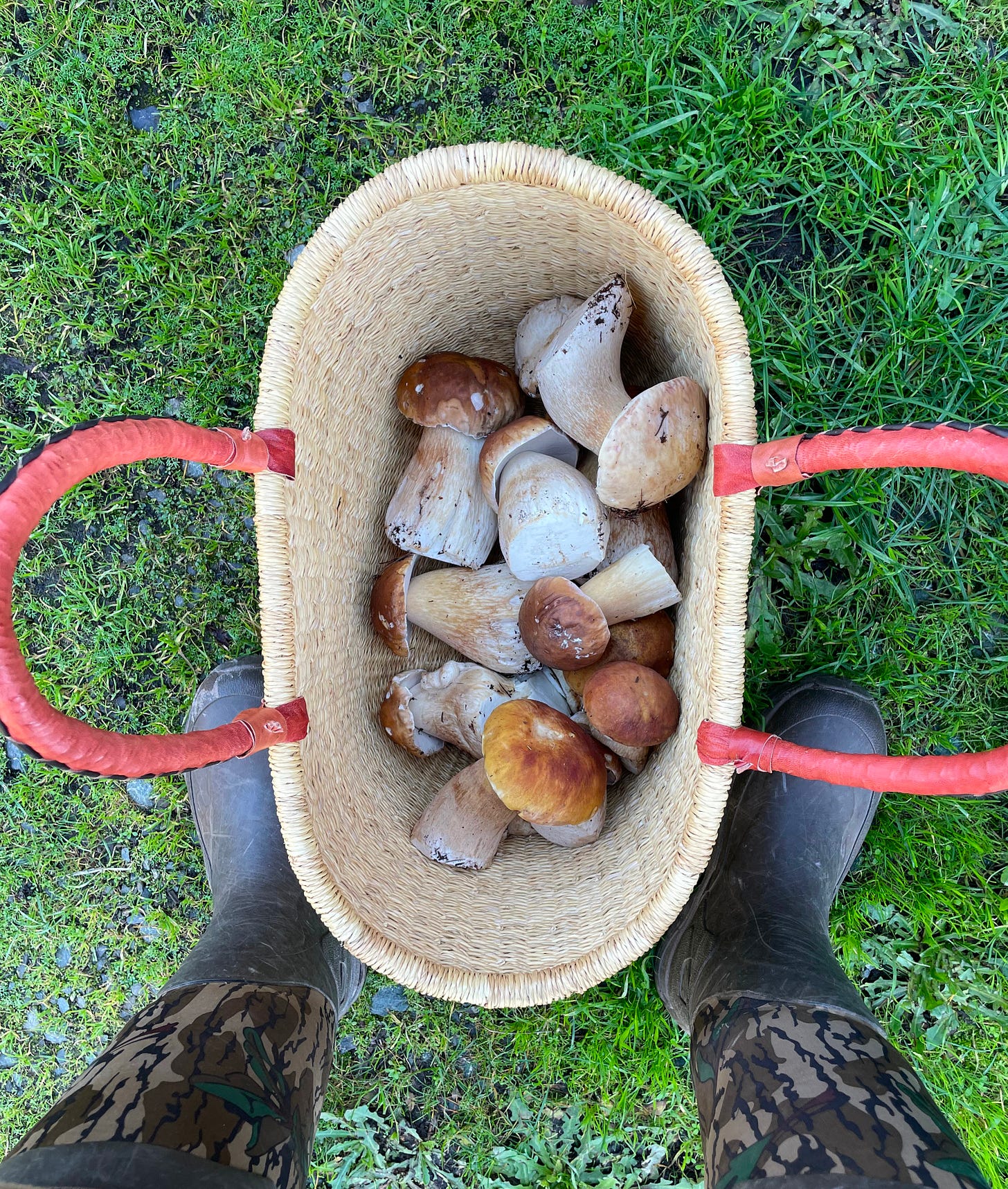
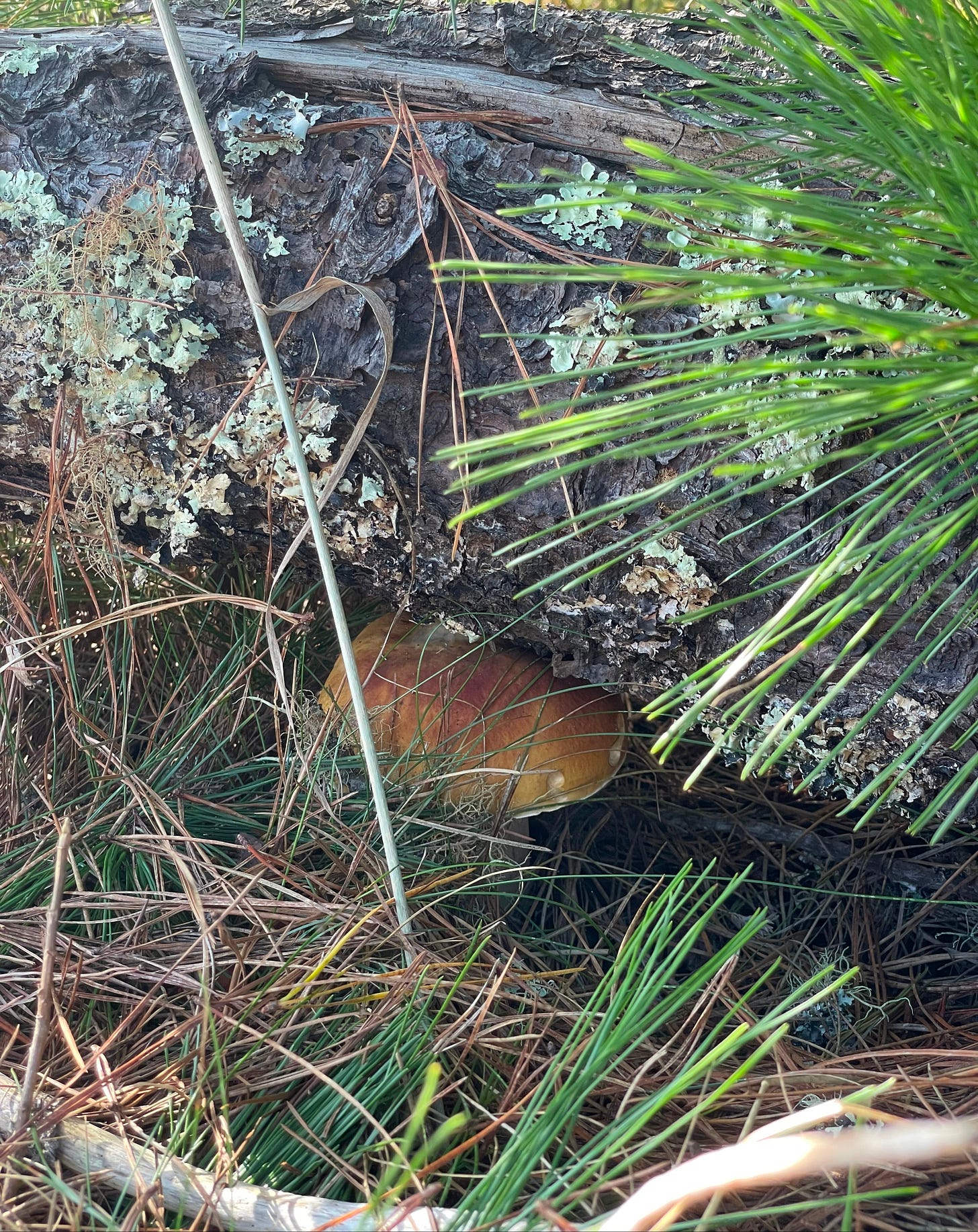
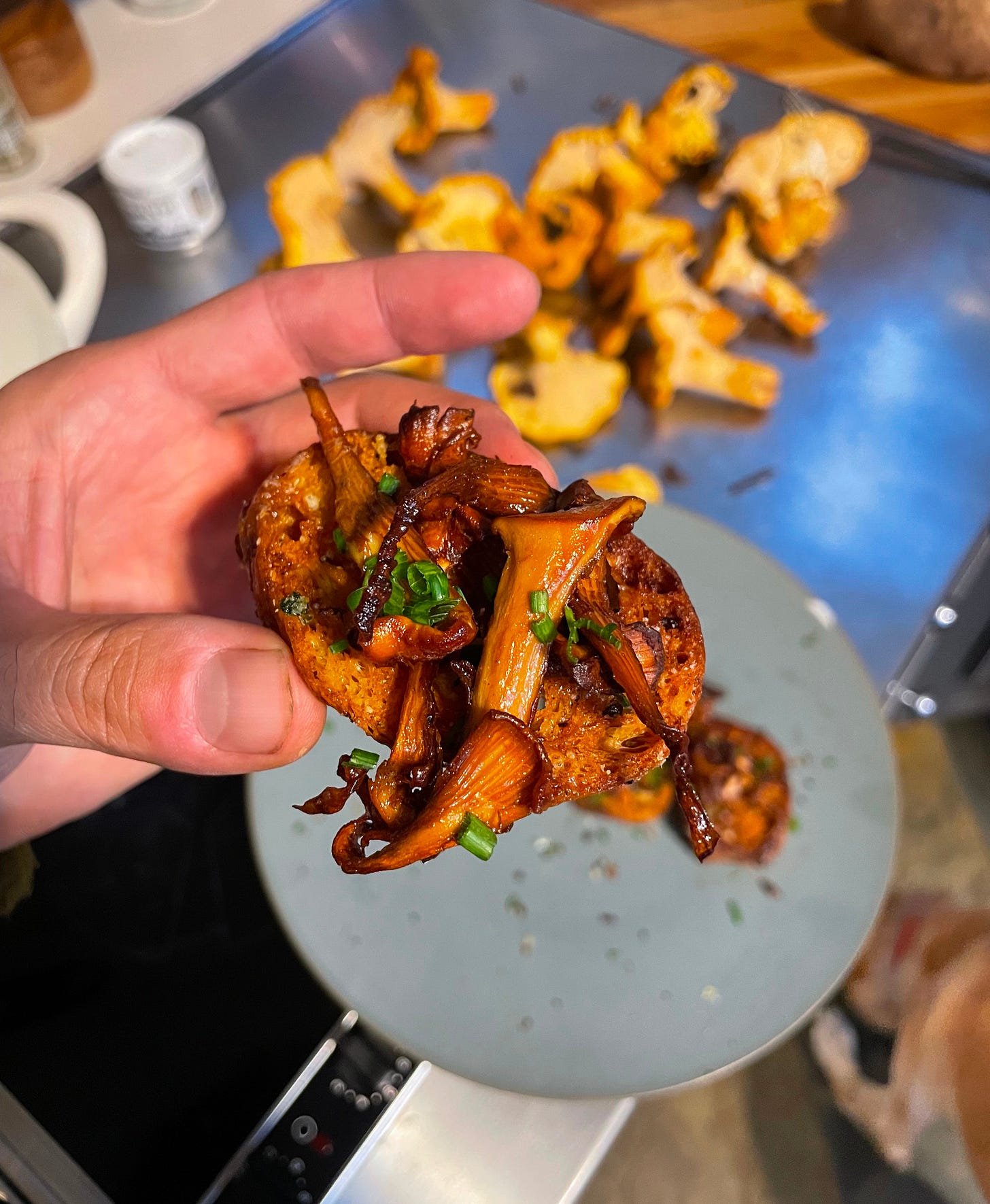
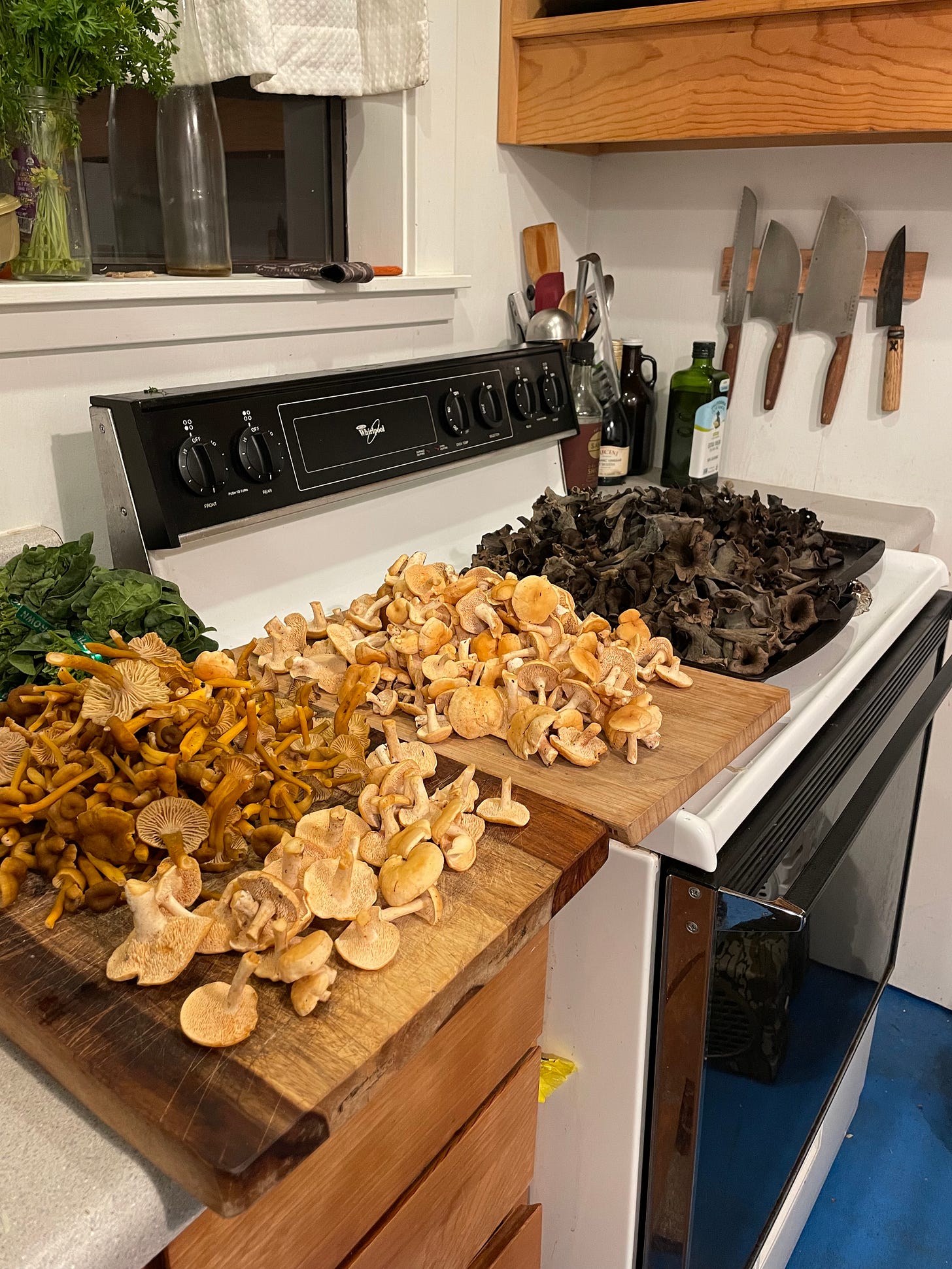
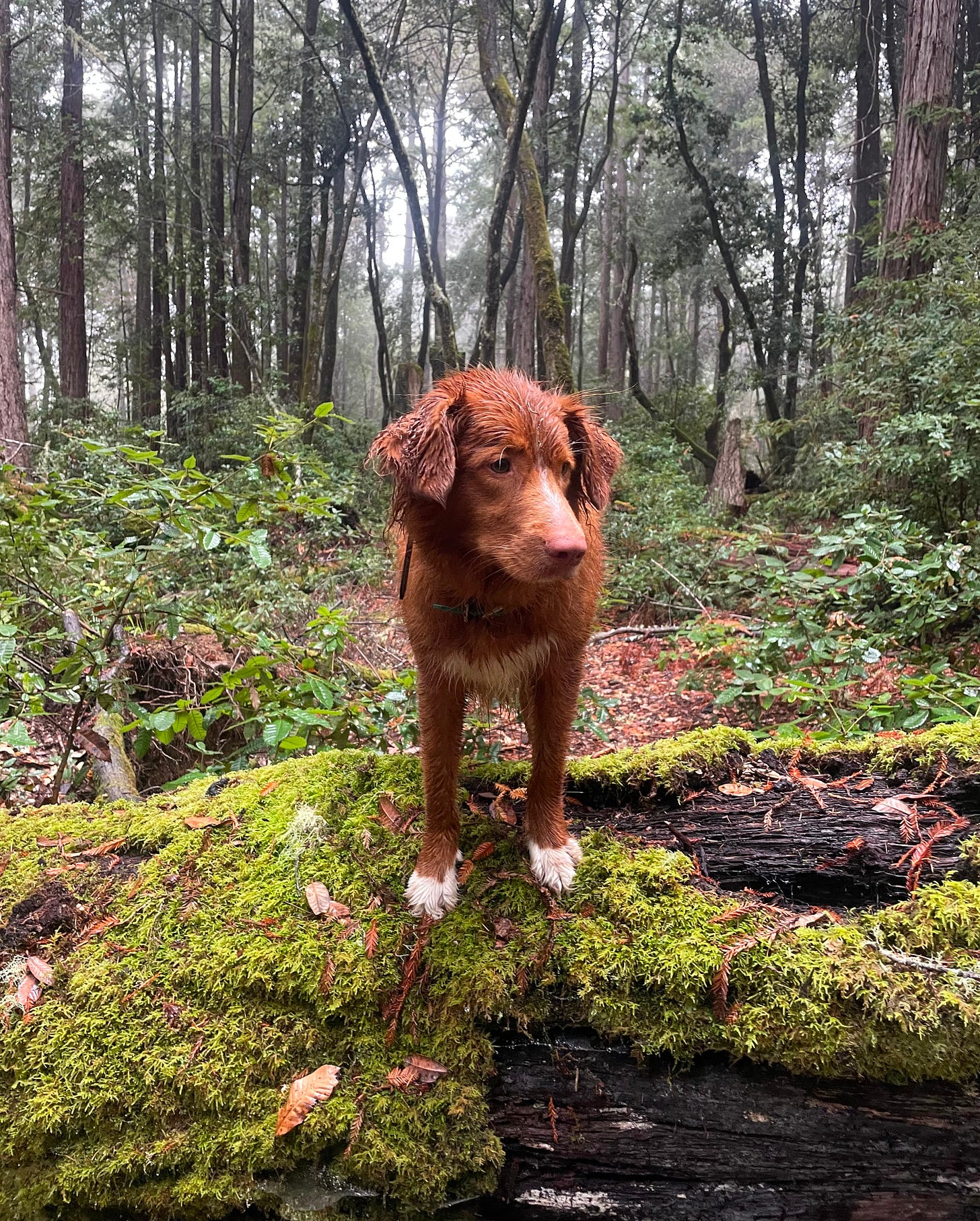
This is just great Mike! Sending it to my good friend botanist/mushroom maestro Tomas, who you'll have to meet one of these days.
Nice post. I’ve been involved with the purchasing and selling of wild edibles at the commercial level pushing on 15 years now. The seasonal changes, the harvest, and also the people picking and the buy stations set up in remote areas through the PNW..all never ceases to amaze me.